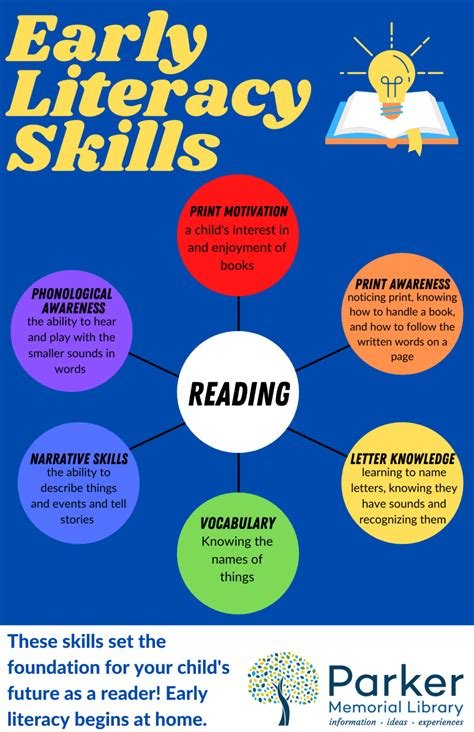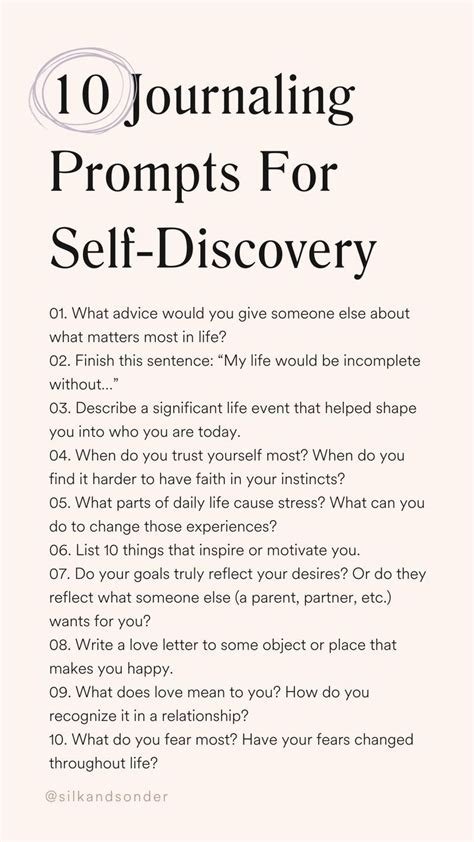The Importance of Early Literacy Development: Tips for Encouraging a Love for Reading
As parents and caregivers, we all want the best for our children. We want them to grow up happy, healthy, and successful. One of the most important ways we can set them up for success is by fostering a love for reading from an early age. Early literacy development has a profound impact on a child’s overall growth and development, and it sets the foundation for future academic success. In this blog post, we will explore the importance of early literacy development and provide practical tips for encouraging a love for reading in young children. From creating a reading routine to incorporating technology in reading, we will cover a wide range of strategies that you can implement to support your child’s literacy journey. By building a community of readers and emphasizing the joy of reading, we can help our children develop a lifelong love for books and learning.
Creating a Reading Routine
When it comes to creating a reading routine for children, consistency is key. Establishing a regular time each day for reading helps to make it a natural part of their daily activities. Whether it’s before bedtime, after school, or during breakfast, finding a time that works for your family can set the stage for a lifelong love of reading.
Another important aspect of creating a reading routine is to make it enjoyable. Encouraging children to choose books that interest them and allowing them to read independently can foster a positive attitude towards reading. Additionally, incorporating reading into daily rituals, such as snuggling up with a book before naptime, can create a sense of comfort and relaxation around books.
Setting specific goals and rewards can also help in creating a reading routine. Whether it’s aiming to read a certain number of pages each day or completing a book within a week, having a target can provide motivation. Offering small rewards, such as extra playtime or a special treat, can further encourage children to stick to their reading routine.
Finally, leading by example is crucial in creating a reading routine. When children see their parents or caregivers engaging in reading for pleasure, it sends a powerful message about the value of books. Making reading a family activity, such as sharing a chapter book together or discussing favorite stories, can strengthen the reading routine and create cherished bonding moments.
Introducing Age-Appropriate Books
When it comes to introducing age-appropriate books to children, it’s important to consider their developmental stage and interests. Providing young readers with books that are suitable for their age and reading level can help foster a love for reading and improve literacy skills.
One way to determine age-appropriate books is by looking at the recommended age range on the book cover or consulting with a librarian or teacher for suggestions. It’s essential to choose books that are not too challenging or too simple, providing just the right amount of engagement and support for the child.
Introducing age-appropriate books to children can also involve incorporating diverse themes and characters that reflect the world around them. Whether it’s books that feature characters from different cultures, abilities, or family structures, exposing young readers to diverse literature can help broaden their perspective and promote empathy.
By introducing age-appropriate books to children, we can help them develop a lifelong love for reading and learning. It’s a way to engage their imagination, promote language development, and nurture a sense of curiosity about the world around them.
Fostering a Reading-Friendly Environment
Creating a reading-friendly environment in your home or classroom is essential for cultivating a love for reading in children. One way to do this is by designating a cozy reading corner with comfortable seating, good lighting, and a variety of books to choose from. This creates a welcoming space that encourages children to spend time with books.
Another important aspect of fostering a reading-friendly environment is building a library of diverse books that reflect the interests and experiences of the children. Providing a wide range of genres, authors, and cultures ensures that every child can find a book that resonates with them.
In addition to physical books, incorporating digital reading options can also enhance the reading environment. E-books and audiobooks can be valuable tools for engaging reluctant readers and accommodating different learning styles.
Finally, modeling a love for reading is crucial in fostering a reading-friendly environment. Adults can lead by example by reading for pleasure themselves and engaging in conversations about books and stories with children.
Engaging in Interactive Storytelling
Interactive storytelling is a powerful tool for engaging young readers in the reading process. By involving children in the story through various interactive techniques, educators and parents can help foster a love for reading and storytelling. One way to engage in interactive storytelling is by using props and puppets to bring the story to life. By acting out different characters and scenes, children can actively participate in the story and develop a deeper understanding of the plot and characters.
Another effective technique for engaging in interactive storytelling is through role-play. Encouraging children to act out parts of the story allows them to connect with the characters and immerse themselves in the narrative. This hands-on approach not only makes the story more memorable, but also helps develop their creativity and imagination.
Furthermore, incorporating open-ended questions and discussion during and after the story can encourage children to think critically and express their thoughts. This interactive process creates a dialogue around the story, allowing children to engage with the themes and messages in a meaningful way.
Engaging in interactive storytelling is a fun and effective way to promote literacy and cultivate a love for reading in children. By using props, encouraging role-play, and facilitating discussion, educators and parents can create a dynamic and engaging reading experience that will leave a lasting impact on young readers.
Utilizing Reading Aloud Techniques
Reading aloud is a valuable tool in promoting literacy among young children. It not only helps in building a child’s vocabulary but also improves their listening and comprehension skills. One effective technique is to use voice inflection to bring the story to life. By varying the pitch, tone, and volume of your voice, you can capture the attention of the child and create an engaging experience.
Another technique is dialogue delivery, where the reader uses different voices for the characters in the story. This not only makes the reading experience more enjoyable but also helps the child understand the characters and their emotions. Additionally, pausing and emphasizing certain words or phrases can help convey the meaning of the story and enhance the child’s understanding.
Utilizing gestures and facial expressions while reading aloud can also make the story more interactive and captivating for the child. By using hand movements and animated facial expressions, the reader can convey the emotions and actions of the characters, making the story more vivid and memorable.
Furthermore, incorporating props and visual aids can further enhance the reading experience. Using objects or pictures relevant to the story can help children visualize the narrative and better understand the context of the plot. These techniques not only make reading aloud more engaging but also contribute to the overall development of a child’s literacy skills.
Incorporating Technology in Reading
When it comes to incorporating technology in reading, there are numerous ways to enhance the reading experience for both children and adults. One popular method is using e-readers and tablets to access digital books. This allows readers to have a wide selection of books at their fingertips and enables them to read on the go. Additionally, audio books and podcasts are also great tools for incorporating technology into reading, as they provide an alternative way for individuals to engage with literature.
Another way to incorporate technology in reading is through interactive reading apps and websites. These platforms offer engaging activities and games that not only make reading fun, but also help improve comprehension and vocabulary skills. Furthermore, virtual reality (VR) and augmented reality (AR) can be utilized to bring stories to life, allowing readers to immerse themselves in the literary world in a whole new way.
Furthermore, technology can be used to connect readers with others through online book clubs, forums, and social media groups. This not only provides a sense of community, but also encourages discussions and exchanges of ideas about the books being read. Additionally, it’s important to note that technology can also be utilized to create and share original content, such as writing and illustrating stories, further fostering creativity and passion for reading.
In conclusion, there are many ways in which technology can be incorporated into reading to enhance the overall experience. Whether it’s through accessing digital books, using interactive reading apps, or connecting with other readers online, technology opens up a world of possibilities for individuals to engage with literature in new and exciting ways.
Encouraging Reading Outside of Books
When it comes to nurturing a love for reading in children, it’s important to think beyond traditional books. Encouraging reading outside of books can take many forms, from exploring different types of literature to incorporating other types of reading material into daily life.
One way to encourage reading outside of books is to introduce children to age-appropriate magazines and newspapers. These can provide a different reading experience and expose children to a variety of topics and writing styles. Magazines and newspapers can be a great way to pique children’s interest in reading and keep them engaged with current events and human interest stories.
In addition to printed material, audio books and podcasts can also be valuable tools for promoting reading. Listening to stories and informative content can help children develop their listening skills and improve comprehension. It can also be a great way to enjoy reading while on the go, whether in the car or during quiet time at home.
Encouraging reading outside of books can also involve incorporating reading into other activities. For example, cooking together from a recipe book can involve reading and following instructions, and exploring nature through field guides can foster an appreciation for reading and learning about the world around us.
Emphasizing the Joy of Reading
Emphasizing the joy of reading is essential for fostering a lifelong love of books and literacy in children. When kids see reading as an enjoyable activity, they are more likely to engage in it regularly and develop strong reading skills. One way to emphasize the joy of reading is to create a cozy reading nook in the home, complete with comfortable seating, good lighting, and a variety of age-appropriate books. This dedicated space sends the message that reading is a special and enjoyable activity.
Another way to emphasize the joy of reading is to celebrate reading milestones and accomplishments. This can be as simple as throwing a mini party when a child finishes their first chapter book or reaches a certain number of books read. By celebrating these achievements, children will associate reading with positive emotions and feel motivated to continue reading. Additionally, modeling enthusiasm for reading as a parent or caregiver can have a big impact. When children see adults getting excited about books and stories, they are more likely to develop a positive attitude towards reading themselves.
Furthermore, incorporating playful and interactive reading activities can help emphasize the joy of reading. This can include acting out stories, making crafts related to a favorite book, or going on a literary-themed scavenger hunt. By engaging in these fun activities, children will see reading as a source of enjoyment and creativity. Finally, it’s important to provide access to a wide range of reading materials that reflect diverse cultures, experiences, and interests. When children can find books that resonate with them personally, they are more likely to find joy in reading and become lifelong readers.
Ultimately, emphasizing the joy of reading is crucial for nurturing a love of books and literacy in children. By creating a positive and enjoyable reading environment, celebrating reading achievements, modeling enthusiasm, incorporating playful activities, and providing diverse reading materials, children are more likely to embrace reading as a source of pleasure and fulfillment.
Supporting Literacy Through Art and Play
Supporting literacy through art and play is a creative and effective way to engage children in the world of reading and writing. By incorporating artistic and playful activities, children not only develop their literacy skills but also foster a love for learning. Through various art forms such as drawing, painting, and crafting, children can express their thoughts and ideas, while enhancing their vocabulary and language skills.
Furthermore, play-based activities such as pretend play, role-playing, and storytelling can ignite children’s imagination and creativity, leading to an increased interest in reading and writing. These activities provide children with the opportunity to actively engage with language and develop their communication skills in a fun and interactive manner.
Art and play also offer a multi-sensory approach to learning, allowing children to use their senses to explore and understand the world around them. This hands-on experience not only reinforces literacy skills but also helps children make meaningful connections between words and their real-life experiences.
Incorporating art and play into literacy activities not only makes learning enjoyable but also helps children develop a deeper understanding and appreciation for the world of language and literacy. It creates a positive and enriching experience that can set the stage for a lifelong love of reading and learning.
Building a Community of Readers
Building a community of readers is essential for fostering a love of reading and lifelong learning. It involves creating a network of individuals who share a passion for books and literacy, and who are committed to promoting a culture of reading within their community.
One way to build a community of readers is to establish book clubs or reading groups where people can come together to discuss and share their thoughts on the books they have read. This not only encourages reading but also provides an opportunity for social interaction and the exchange of ideas.
Another important aspect of building a community of readers is to organize and participate in literary events such as author talks, book fairs, and storytelling sessions. These events not only bring people together but also help promote reading as a joyful and enriching experience.
Finally, leveraging the power of social media and online platforms can also help in building a community of readers. Creating online forums and book-focused communities can connect individuals with similar interests and provide a platform for sharing recommendations, reviews, and discussions about books.
Frequently Asked Questions
Why is early literacy development important?
Early literacy development is important because it sets the foundation for a child’s lifelong love for reading and learning. It also helps children develop important language and communication skills.
How can I create a reading routine for my child?
You can create a reading routine by setting aside time each day for reading, establishing a cozy reading space, and making reading a regular part of your daily activities.
What are age-appropriate books for young children?
Age-appropriate books for young children include board books, picture books, and simple stories with engaging illustrations. These books should match the child’s developmental stage and interests.
How can I foster a reading-friendly environment at home?
You can foster a reading-friendly environment at home by having a variety of books accessible, modeling reading behavior, and creating opportunities for reading and storytelling.
What are interactive storytelling techniques?
Interactive storytelling techniques include asking open-ended questions, encouraging participation, and using props or actions to bring stories to life.
How can I incorporate technology in reading for my child?
You can incorporate technology in reading by using interactive e-books, educational reading apps, and digital storytelling tools that engage and enhance the reading experience.
How can I encourage reading outside of books?
You can encourage reading outside of books by exploring different reading materials such as magazines, newspapers, and informational texts, and by incorporating reading into everyday activities like cooking and gardening.






